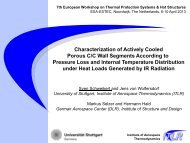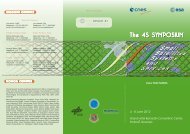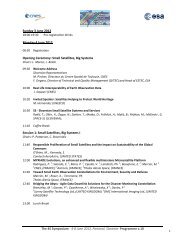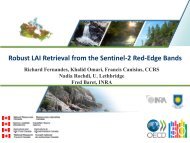Long term total ozone trend analysis
Long term total ozone trend analysis
Long term total ozone trend analysis
Create successful ePaper yourself
Turn your PDF publications into a flip-book with our unique Google optimized e-Paper software.
Institut für Umweltphysik<br />
Summary and Conclusions.<br />
Fachbereich 1<br />
Physik<br />
�Multiple linear regression <strong>analysis</strong> provides a good near global picture of natural and<br />
anthropogenic contributions to inter-annual variations of <strong>total</strong> <strong>ozone</strong>.<br />
�For the different explanatory variables, <strong>ozone</strong> fluctuations range about 3-10 DU.<br />
�The recent increases (2010) in both hemispheres <strong>total</strong> <strong>ozone</strong> are mainly related to<br />
increases in eddy heat flux (or reduced polar <strong>ozone</strong> loss after a series of cold Arctic<br />
winters in the mid-nineties ).<br />
�For the 2011 decrease, we had the opposite, QBO west phase, little wave activity<br />
and strong chemical <strong>ozone</strong> loss.<br />
� SBUV/TOMS/OMI/GSG shows about the same significance in the overall fitting as<br />
SBUV/TOMS/OMI.<br />
�The fingerprint of recovery is less clear due to the large influence from<br />
atmospheric dynamics.

















